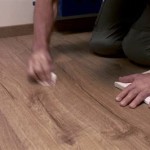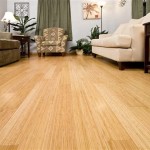Tiles, Granite, or Marble: A Comprehensive Comparison for Flooring Choices
Selecting the right flooring material is a critical decision for any construction or renovation project. The flooring not only defines the aesthetic appeal of a space but also contributes significantly to its functionality, durability, and overall value. Among the myriad of options available, tiles, granite, and marble stand out as popular choices, each possessing unique characteristics that cater to different needs and preferences. This article provides a detailed comparison of these three materials, highlighting their advantages and disadvantages to assist in making an informed decision.
The choice between tiles, granite, and marble involves considering several factors, including cost, durability, maintenance requirements, aesthetic preferences, and the specific application or room in which the flooring will be installed. A thorough understanding of these aspects is crucial for achieving a satisfactory outcome and ensuring long-term satisfaction with the selected flooring solution.
Durability and Longevity
Durability is a paramount consideration when selecting flooring materials. The floor is subjected to constant wear and tear, including foot traffic, impacts from dropped objects, and exposure to moisture and chemicals. Understanding the inherent durability of tiles, granite, and marble is essential for choosing a material that can withstand the demands of its intended environment.
Granite is renowned for its exceptional durability. As an igneous rock formed deep within the earth under immense pressure and heat, granite is incredibly hard and resistant to scratches, chips, and stains. It can withstand heavy foot traffic and is relatively impervious to most household chemicals. This makes granite an excellent choice for high-traffic areas such as kitchens, hallways, and commercial spaces.
Tiles, particularly porcelain tiles, also offer impressive durability. Porcelain tiles are manufactured at high temperatures, resulting in a dense and non-porous material that is highly resistant to scratches, stains, and water damage. Ceramic tiles, while less dense than porcelain, still provide good durability for residential applications. The durability of tiles is often rated using the Porcelain Enamel Institute (PEI) scale, which indicates the tile's resistance to abrasion. Higher PEI ratings signify greater durability.
Marble, while undeniably elegant, is generally less durable than granite and some types of tile. Marble is a metamorphic rock, primarily composed of calcium carbonate. This composition makes it susceptible to scratching, staining, and etching from acidic substances like vinegar, lemon juice, and certain cleaning products. While marble can withstand moderate foot traffic, it requires careful maintenance to preserve its appearance and prevent damage. Sealing is crucial for protecting marble from stains and moisture penetration.
In summary, granite offers the highest level of durability, followed by porcelain tiles. Marble, while beautiful, requires more diligent care to maintain its integrity over time.
Aesthetics and Design Versatility
The aesthetic appeal of flooring is a critical factor for many homeowners and designers. The flooring sets the tone for the entire space and contributes significantly to its overall ambiance. Tiles, granite, and marble each offer distinct aesthetic qualities that can complement various design styles.
Tiles offer the greatest design versatility. They are available in a vast array of colors, patterns, sizes, and textures, allowing for endless creative possibilities. Tiles can mimic the appearance of natural stone, wood, and even concrete, providing cost-effective alternatives to these materials. Furthermore, decorative tiles and intricate mosaic patterns can be used to create unique and personalized flooring designs.
Granite boasts a natural beauty characterized by its unique veining and crystalline structure. The colors of granite range from light to dark, with various shades of gray, beige, brown, and even pink and green. While granite offers less design versatility than tiles, its natural variations ensure that each slab is unique, adding a touch of sophistication and elegance to any space. The inherent patterns within granite offer a timeless appeal.
Marble is widely regarded as one of the most luxurious and elegant flooring materials. Its smooth, polished surface and distinctive veining patterns create a sense of opulence and refinement. Marble is typically available in light colors, such as white, cream, and gray, but can also be found in darker shades. The classic beauty of marble makes it a popular choice for formal living areas, bathrooms, and entryways. However, the consistent patterns throughout the space can be limited depending on the supply.
Therefore, tiles provide the most design flexibility, while both granite and marble offer unique natural aesthetics, with marble often associated with a more luxurious appearance.
Maintenance and Cleaning Requirements
The maintenance and cleaning requirements of flooring materials are important considerations, as they directly impact the long-term upkeep and appearance of the floor. Some materials require more frequent and specialized cleaning than others.
Tiles are generally easy to maintain. Most tiles are non-porous and resistant to stains, making them simple to clean with mild detergents and water. Regular sweeping or vacuuming can remove loose dirt and debris, while occasional mopping can help maintain their shine. Grout lines between tiles may require periodic cleaning with a grout cleaner to prevent discoloration. However, improvements in grout technology have resulted in stain-resistant options.
Granite is also relatively easy to maintain. Its non-porous surface resists stains and spills, making it simple to clean with a damp cloth and mild detergent. However, it is advisable to avoid using abrasive cleaners or harsh chemicals, as these can damage the sealant applied to the granite surface. Regular sealing, typically every one to three years, is necessary to maintain its stain resistance.
Marble requires the most diligent maintenance. Its porous nature makes it susceptible to staining and etching, so spills should be cleaned up immediately. Acidic substances should be avoided, and only pH-neutral cleaners should be used. Regular sealing is essential to protect marble from moisture and stains. Some marble floors may also require periodic polishing to maintain their shine and remove minor scratches.
In terms of maintenance, tiles and granite are relatively low-maintenance options, while marble requires more careful attention to prevent staining and damage.
Cost Considerations
The cost of flooring materials is a significant factor in the decision-making process. The overall cost includes not only the price of the material itself but also the cost of installation and any necessary maintenance over the lifespan of the floor.
Tiles generally offer the most cost-effective option. The price of tiles varies depending on the material (ceramic, porcelain, etc.), size, and design. However, tiles are typically less expensive than both granite and marble. Installation costs for tiles can also be lower, particularly for standard sizes and patterns. Furthermore, the long lifespan and low maintenance requirements of tiles can result in lower overall costs over time.
Granite is typically more expensive than tiles but less expensive than marble. The price of granite depends on the color, pattern, and thickness of the slab. Installation costs for granite can be higher due to the weight and size of the slabs, as well as the need for specialized tools and expertise. While granite requires periodic sealing, its durability and longevity can offset the higher initial costs.
Marble is generally the most expensive flooring material. The price of marble depends on the quality, rarity, and veining patterns of the stone. Installation costs for marble are also high, as it requires careful handling and precise cutting to avoid damage. The ongoing maintenance costs for marble can also be significant, due to the need for regular sealing and specialized cleaning products. The total cost can be significant in the short-term and long-term.
From a cost perspective, tiles are typically the most budget-friendly option, followed by granite. Marble represents the most significant investment.
Suitability for Different Areas
The suitability of each flooring material can vary depending on the specific area in which it will be installed. Considerations include the level of foot traffic, exposure to moisture, and the desired aesthetic of the space.
Tiles are highly versatile and can be used in virtually any area of the home. Porcelain tiles are particularly well-suited for high-moisture areas such as bathrooms and kitchens, due to their water resistance. Durable tiles are also a good choice for high-traffic areas like entryways and hallways. Furthermore, the wide range of styles and designs makes tiles suitable for any room in the house.
Granite is an excellent choice for kitchens, bathrooms, and entryways. Its durability and stain resistance make it ideal for areas that are prone to spills and high foot traffic. Granite is also a good choice for outdoor applications, such as patios and walkways, due to its resistance to weathering and temperature fluctuations.
Marble is best suited for areas with moderate foot traffic and minimal exposure to moisture and acidic substances. It is a popular choice for bathrooms, entryways, and formal living areas. However, it is not recommended for kitchens or high-traffic areas, due to its susceptibility to staining and scratching.
In summary, tiles offer the greatest versatility and can be used in any area. Granite is well-suited for kitchens, bathrooms, and high-traffic areas, while marble is best reserved for areas with less wear and tear.

Which Is Better Granite Or Marble Flooring Skytouch

Which Is Better Granite Or Marble Flooring Skytouch

Marble Vs Granite Difference Between These Two Materials Dedalo Stone

Which Is Better Granite Or Marble Flooring Skytouch

Which Is Better For Flooring Marble Granite Or Tile Thediyplan

Marble Vs Granite Tile Know The Differences My Affordable Flooring

Granite Vs Porcelain Tiles Which Is The Best Flooring Option

Granite Tile Vs Marble Porcelain Floor Guide And Comparison Chart

Granite Or Marble Differences Advantages And Disadvantages

Granite Slabs Vs Tiles Best Uses For Diffe S
Related Posts








